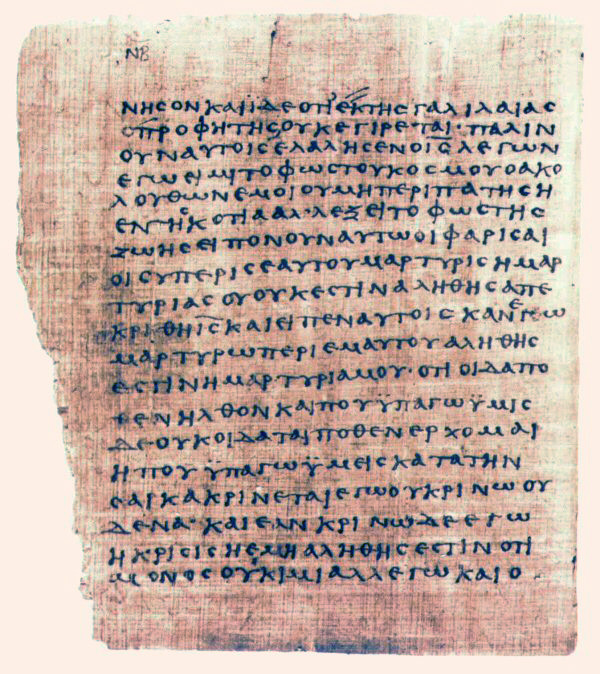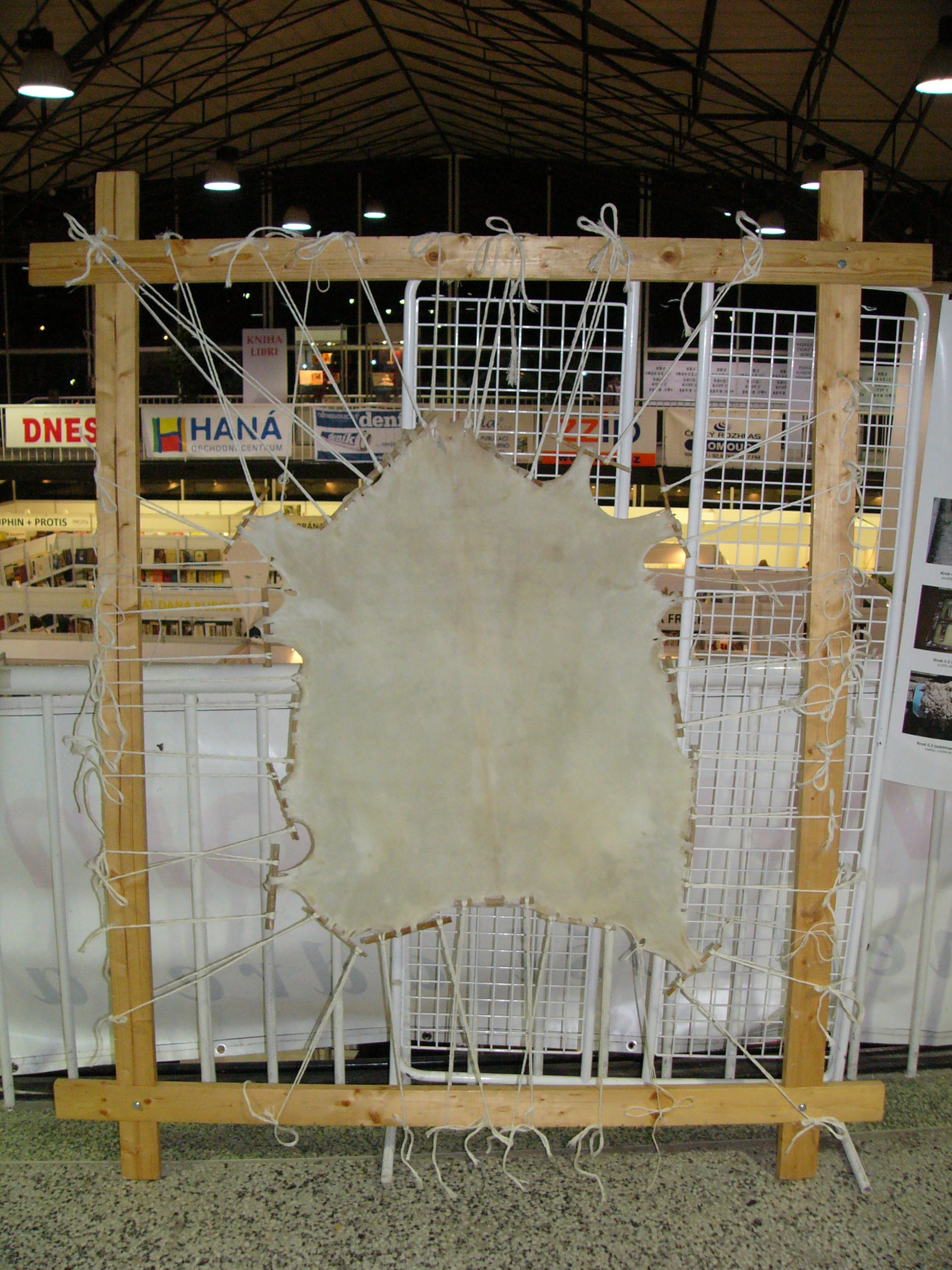|
Dishna Papers
The Dishna Papers, also often known as the Bodmer Papyri, are a group of twenty-two papyri discovered in Dishna, Egypt in 1952. Later, they were purchased by Martin Bodmer and deposited at the Bodmer Library in Switzerland. The papyri contain segments from the Old and New Testaments, early Christian literature, Homer, and Menander. The oldest, P66 dates to . Most of the papyri are kept at the Bodmer Library, in Cologny, Switzerland outside Geneva. In 2007, the Vatican Library acquired Bodmer Papyrus 14–15 (known as P75 and as the Mater Verbi ( Hanna)) Papyrus. Since the papers are held not only at the Bodmer Library, but also at the Vatican, Oslo, Barcelona, and other locations, many scholars have preferred the term ''Dishna Papers'' since the mid-2010s.Lundhaug, Hugo. ‘The Dishna Papers and the Nag Hammadi Codices: The Remains of a Single Monastic Library?’, in ''The Nag Hammadi Library and Late Antique Egypt'', ed. Hugo Lundhaug and Lance Jenott. Tübingen: Mohr Sieb ... [...More Info...] [...Related Items...] OR: [Wikipedia] [Google] [Baidu] |
Nag Hammadi Library
The Nag Hammadi library (also known as the Chenoboskion Manuscripts and the Gnostic Gospels) is a collection of early Christian and Gnostic texts discovered near the Upper Egyptian town of Nag Hammadi in 1945. Thirteen leather-bound papyrus codices buried in a sealed jar were found by a local farmer named Muhammed al-Samman. The writings in these codices comprise 52 mostly Gnostic treatises, but they also include three works belonging to the '' Corpus Hermeticum'' and a partial translation/alteration of Plato's ''Republic''. In his introduction to ''The Nag Hammadi Library in English'', James Robinson suggests that these codices may have belonged to a nearby Pachomian monastery and were buried after Saint Athanasius condemned the use of non-canonical books in his Festal Letter of 367 A.D. The Pachomian hypothesis has been further expanded by Lundhaug & Jenott (2015, 2018) and further strengthened by Linjamaa (2024). In his 2024 book, Linjamaa argues that the Nag Hammadi l ... [...More Info...] [...Related Items...] OR: [Wikipedia] [Google] [Baidu] |
Parchment
Parchment is a writing material made from specially prepared Tanning (leather), untanned skins of animals—primarily sheep, calves and goats. It has been used as a writing medium in West Asia and Europe for more than two millennia. By AD 400 most literature in these regions that was intended for preservation began to be transferred from papyrus to parchment. ''Vellum'' is a finer-quality parchment made from the skins of young animals such as lambs and young calves. The generic term ''animal membrane'' is sometimes used by libraries and museums that wish to avoid distinguishing between parchment and vellum. Parchment and vellum Today the term ''parchment'' is often used in non-technical contexts to refer to any animal skin, particularly goat, sheep or cow, that has been scraped or dried under tension. The term originally referred only to the skin of sheep and, occasionally, goats. The equivalent material made from calfskin, which was of finer quality, was known as ''vellum'' ... [...More Info...] [...Related Items...] OR: [Wikipedia] [Google] [Baidu] |
Scroll
A scroll (from the Old French ''escroe'' or ''escroue''), also known as a roll, is a roll of papyrus, parchment, or paper containing writing. Structure A scroll is usually partitioned into pages, which are sometimes separate sheets of papyrus or parchment glued together at the edges. Scrolls may be marked divisions of a continuous roll of writing material. The scroll is usually unrolled so that one page is exposed at a time, for writing or reading, with the remaining pages rolled and stowed to the left and right of the visible page. Text is written in lines from the top to the bottom of the page. Depending on the language, the letters may be written left to right, right to left, or alternating in direction (boustrophedon). History Scrolls were the first form of editable record keeping texts, used in Eastern Mediterranean ancient Egyptian civilizations. Parchment scrolls were used by the Israelites among others before the codex or bound book with parchment pages was invented ... [...More Info...] [...Related Items...] OR: [Wikipedia] [Google] [Baidu] |
Codex
The codex (: codices ) was the historical ancestor format of the modern book. Technically, the vast majority of modern books use the codex format of a stack of pages bound at one edge, along the side of the text. But the term ''codex'' is now reserved for older manuscript books, which mostly used sheets of vellum, parchment, or papyrus, rather than paper. By convention, the term is also used for any Aztec codex (although the earlier examples do not actually use the codex format), Maya codices and other pre-Columbian manuscripts. Library practices have led to many European manuscripts having "codex" as part of their usual name, as with the Codex Gigas, while most do not. Modern books are divided into paperback (or softback) and those bound with stiff boards, called hardbacks. Elaborate historical bindings are called treasure bindings. At least in the Western world, the main alternative to the paged codex format for a long document was the continuous scroll, which was the ... [...More Info...] [...Related Items...] OR: [Wikipedia] [Google] [Baidu] |
Ancient Greek
Ancient Greek (, ; ) includes the forms of the Greek language used in ancient Greece and the classical antiquity, ancient world from around 1500 BC to 300 BC. It is often roughly divided into the following periods: Mycenaean Greek (), Greek Dark Ages, Dark Ages (), the Archaic Greece, Archaic or Homeric Greek, Homeric period (), and the Classical Greece, Classical period (). Ancient Greek was the language of Homer and of fifth-century Athens, fifth-century Athenian historians, playwrights, and Ancient Greek philosophy, philosophers. It has contributed many words to English vocabulary and has been a standard subject of study in educational institutions of the Western world since the Renaissance. This article primarily contains information about the Homeric Greek, Epic and Classical periods of the language, which are the best-attested periods and considered most typical of Ancient Greek. From the Hellenistic period (), Ancient Greek was followed by Koine Greek, which is regar ... [...More Info...] [...Related Items...] OR: [Wikipedia] [Google] [Baidu] |
Bohairic
Bohairic is a dialect of the Coptic language, the latest stage of the Egyptian language. Bohairic is attested from the eighth century CE, and has been the chief liturgical language of the Coptic Orthodox Church since the eleventh century. Terminology The name Bohairic is derived from the Arabic place name , retained today in Beheira Governorate. The written form is generally believed to have originated in the western Nile Delta. Like the other forms of Coptic, Bohairic is usually described as a "dialect". An alternate hypothesis supported by some scholars is that the various forms of Coptic do not represent speech variation but different orthographic traditions. History The earliest attestation of Bohairic is in the fourth century, but most texts are from the ninth century and later. Following the Arab conquest of Egypt, Coptic lost ground to Arabic. Various scholars posit different dates for the demise of spoken Coptic, ranging from the eleventh century to the fourteenth centur ... [...More Info...] [...Related Items...] OR: [Wikipedia] [Google] [Baidu] |
Coptic Language
Coptic () is a dormant language, dormant Afroasiatic languages, Afroasiatic language. It is a group of closely related Egyptian dialects, representing the most recent developments of the Ancient Egyptian language, Egyptian language, and historically spoken by the Copts, starting from the third century AD in Roman Egypt. Coptic was supplanted by Arabic as the primary Vernacular, spoken language of Egypt following the Arab conquest of Egypt and was slowly replaced over the centuries. Coptic has no native speakers today apart from a number of priests, although it remains in daily use as the Sacred language, liturgical language of the Coptic Orthodox Church and of the Coptic Catholic Church. It is written with the Coptic alphabet, a modified form of the Greek alphabet with seven additional letters borrowed from the Demotic (Egyptian), Demotic Egyptian script. The major Coptic dialects are Sahidic, Bohairic, Akhmimic, Fayyumic, Lycopolitan (Asyutic), and Oxyrhynchite. Sahidic Coptic ... [...More Info...] [...Related Items...] OR: [Wikipedia] [Google] [Baidu] |
Gnostic
Gnosticism (from Ancient Greek: , romanized: ''gnōstikós'', Koine Greek: �nostiˈkos 'having knowledge') is a collection of religious ideas and systems that coalesced in the late 1st century AD among early Christian sects. These diverse groups emphasized personal spiritual knowledge ('' gnosis'') above the proto-orthodox teachings, traditions, and authority of religious institutions. Generally, in Gnosticism, the Monad is the supreme God who emanates divine beings; one, Sophia, creates the flawed demiurge who makes the material world, trapping souls until they regain divine knowledge. Consequently, Gnostics considered material existence flawed or evil, and held the principal element of salvation to be direct knowledge of the hidden divinity, attained via mystical or esoteric insight. Many Gnostic texts deal not in concepts of sin and repentance, but with illusion and enlightenment. Gnosticism likely originated in the late first and early second centuries around Alex ... [...More Info...] [...Related Items...] OR: [Wikipedia] [Google] [Baidu] |
Barcelona
Barcelona ( ; ; ) is a city on the northeastern coast of Spain. It is the capital and largest city of the autonomous community of Catalonia, as well as the second-most populous municipality of Spain. With a population of 1.6 million within city limits,Barcelona: Población por municipios y sexo – Instituto Nacional de Estadística. (National Statistics Institute) its urban area extends to numerous neighbouring municipalities within the province of Barcelona and is home to around 5.3 million people, making it the fifth most populous ... [...More Info...] [...Related Items...] OR: [Wikipedia] [Google] [Baidu] |
Cologne
Cologne ( ; ; ) is the largest city of the States of Germany, German state of North Rhine-Westphalia and the List of cities in Germany by population, fourth-most populous city of Germany with nearly 1.1 million inhabitants in the city proper and over 3.1 million people in the Cologne Bonn Region, Cologne Bonn urban region. Cologne is also part of the Rhine-Ruhr metropolitan region, the List of EU metropolitan regions by GDP#2021 ranking of top four German metropolitan regions, second biggest metropolitan region by GDP in the European Union. Centered on the left bank of the Rhine, left (west) bank of the Rhine, Cologne is located on the River Rhine (Lower Rhine), about southeast of the North Rhine-Westphalia state capital Düsseldorf and northwest of Bonn, the former capital of West Germany. The city's medieval Cologne Cathedral () was the History of the world's tallest buildings#Churches and cathedrals: Tallest buildings between the 13th and 20th century, world's talles ... [...More Info...] [...Related Items...] OR: [Wikipedia] [Google] [Baidu] |
Oxford, Mississippi
Oxford is the List of municipalities in Mississippi, 14th most populous city in Mississippi, United States, and the county seat of Lafayette County, Mississippi, Lafayette County, southeast of Memphis, Tennessee, Memphis. A college town, Oxford surrounds the University of Mississippi or "Ole Miss". Founded in 1837, the city is named after Oxford, England. Purchasing the land from a Chickasaw, pioneers founded Oxford in 1837. In 1841, the Mississippi State Legislature selected it as the site of the state's first university, Ole Miss. Oxford is also the hometown of Nobel Prize-winning novelist William Faulkner, and served as the inspiration for his fictional Yoknapatawpha County, Jefferson in Yoknapatawpha County. Lucius Quintus Cincinnatus Lamar, who served as a US Supreme Court Justice and United States Secretary of the Interior, Secretary of the Interior, also lived and is buried in Oxford. At the 2020 US Census, the population was 25,416. History 19th century Oxford and Laf ... [...More Info...] [...Related Items...] OR: [Wikipedia] [Google] [Baidu] |








